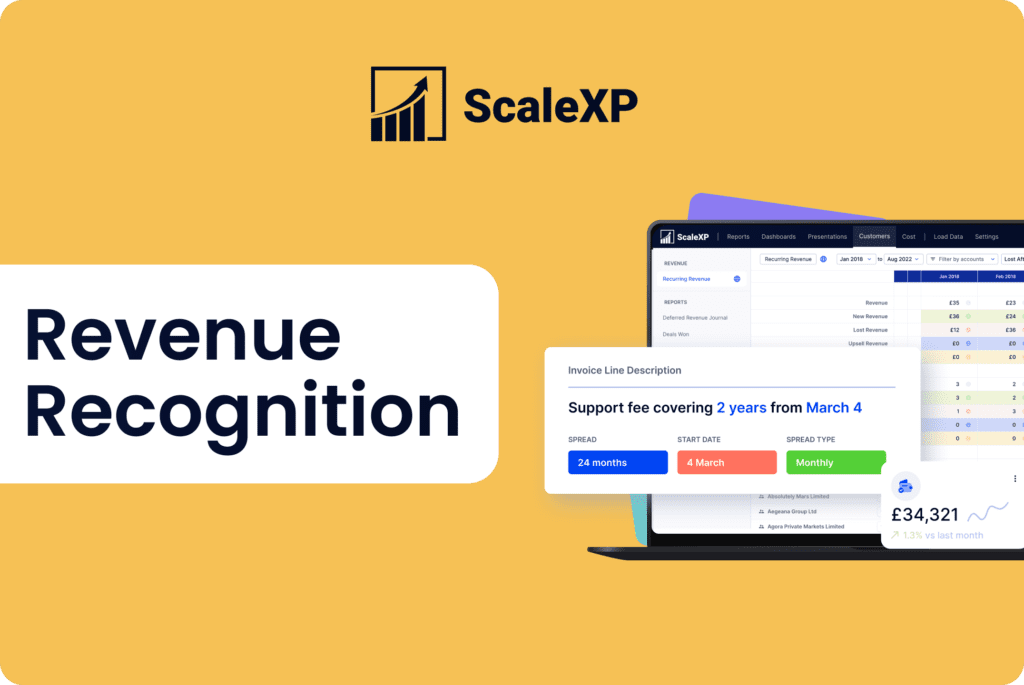What is accrued revenue?
Accrued revenue represents money earned by a company for services or services delivered but not yet invoiced. It is a critical component of accrual accounting, as it ensures that revenue is recognised as it is earned, regardless of when the invoice is issued.
Why is managing accrued revenue important?
To ensure compliance with GAAP (or IFRS internationally) accounting principles, it is important to correctly account for accrued revenue, to ensure businesses comply with the general principle of matching the reported revenue with the timing of the underlying service rendered.
When does accrued revenue occur?
Accrued revenue is required whenever goods and services are delivered significantly in advance of the related invoice being issued.
Here are some examples of situations where accrued revenue is generated:
- long-term projects where revenue is recognised in relation to the percentage of completion;
- milestone projects where revenue is recognised based on certain milestones reached;
- interest income earned which will be collected as part of the principal repayment at the end of the loan term.
Example journal entries for accrued income
Example 1
A service company agrees to invoice a customer for a project based on certain milestones being met. The total contract is for $12,000, spread evenly over one year and the project is on track to deliver at $1,000 per month of income, but the first milestone is only after three months. After the first month, the company has therefore provided services worth $1,000 for which the customer is contractually obligated to pay for but for which the company cannot yet invoice for. In this case, the company will record $1,000 of income (Credit Sales) but there is no accounts receivable recognised, instead it will record an asset for the income earned but not yet invoiced (Debit Accrued Income).
Journal entry:
- Debit – Accrued Income: $1,000
- Credit – Sales: $1,000
- Example 2
A construction company has been contracted to construct an office building for a client for a total contract value of $5 million. The building construction will take 12 months to complete. The agreement specifies that the company will bill the client quarterly based on the percentage of completion of the work.
At the end of the first month, the company assesses that they have completed 10% of the total project and as a result can recognise $500,000. They will be able to bill this, plus any additional completed work, at the end of the quarter, two months later.
This is the journal entry after the first month:
- Debit – Accrued Revenue: $500,000
- Credit – Revenue: $500,000
This is the journal entry after the second month:
- Debit – Accrued Revenue: $250,000
- Credit – Revenue: $250,000
This is the journal entry after the third month:
- Debit – Accounts Receivable: $1,250,000
- Credit – Accrued Revenue: $750,000
- Credit – Revenue: $500,000
Is accrued revenue on the income statement?
Yes, the point of accrued revenue (also known as accrued revenue or accrued sales) is that the revenue is recognised on the income statement as earned with no need to wait for an associated invoice, cash payment or accounts receivable.
What is accrued revenue versus deferred revenue?
Deferred revenue and accrued revenue represent opposite situations in the flow of money and the delivery of services or products.
Deferred revenue arises when a client pays you upfront for goods and services you are yet to deliver.
Accrued revenue occurs when you deliver the goods or services before you invoice the client.
Here are some further differences between accounting for accrued income versus deferred income:
- Accrued revenue is recorded as an asset on the balance sheet in advance of being invoiced. Deferred revenue, on the other hand, is recognised as a liability on the balance sheet until the invoiced services have all been delivered.
- Accrued revenue represents earned revenue not yet invoiced or paid for. Deferred revenue represents unearned revenue already invoiced or paid for.
- Accrued revenue enables businesses to recognise the full value of revenue earned, even if they have not yet been invoiced. Deferred revenue, on the other hand, requires businesses to defer revenue recognition until services are earned, even if they have already been invoiced.
What is the difference between accrued revenue and accounts receivable?
Accrued revenue and accounts receivable are both assets on the balance sheet representing earned income for which cash has not yet been received. However, accrued revenue is recognised when revenue is earned but before the customer is billed whereas accounts receivable is recognised after the customer is billed but before the payment is actually received.
- Many SME accounting systems such as Xero and QuickBooks will automate the creation of accounts receivable assets when a customer is invoiced. Generally, however, accounting systems require manual intervention and tracking in order to record accrued revenue. This is because the revenue is earned through a customer contract and service delivery, with no accounting action to trigger the asset creation.
- Accrued revenue is often reported as part of “other current assets” whereas accounts receivable (also called “trade receivables” or “debtors” or “trade debtors”) are generally reported as their own line item.
- Almost every company records accounts receivable (the exception would be companies operating on a purely cash basis), whereas only companies who recognise revenue in advance of invoicing it will record accrued income.
- Accrued revenue indicates potential future cash inflows as no invoice has yet been issued. Accounts receivable indicates expected cash inflows, as the customer has already been invoiced for this revenue.
- Accrued revenue has a lower level of certainty than accounts receivable, though neither has yet converted to cash. Accrued revenue typically carries a higher risk than accounts receivable as it’s based on revenues that haven’t been billed yet rather than invoiced amounts.
What are the accounting rules for accrued revenue under IFRS and GAAP?
Both GAAP in the US and IFRS internationally follow the same general principal, which is that revenue must be recognised as earned rather than as invoiced. The relevant revenue recognition rules are ASC 606 and IFRS 15. Read more about these revenue recognition accounting standards, particularly as applied to SaaS companies, in this article.
How can software make revenue recognition compliance easier?
SME accounting systems such as Xero and QuickBooks do not contain the functionality to comply with ASC 606 or IFRS 15 on their own. Instead, they require users to track customer level data separately and create manual journal entries to comply fully with GAAP and IFRS accounting standards. Add-on software, such as ScaleXP, can help. ScaleXP imports all invoices directly from the accounting system and uses a sophisticated series of text recognition algorithms to fully automate revenue recognition including both deferred and accrued revenue. It allows you to easily track revenue not yet invoiced as well as invoiced in advance, without the need for spreadsheets to track everything separately.
Ready to transform your revenue recognition process, to simplify and automate it? Book a demo here.






